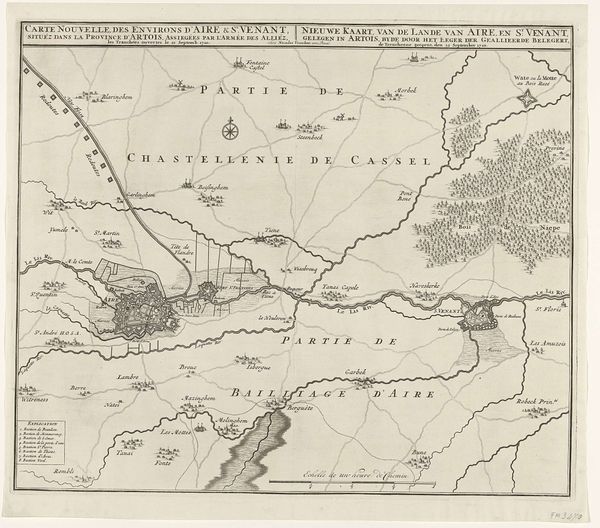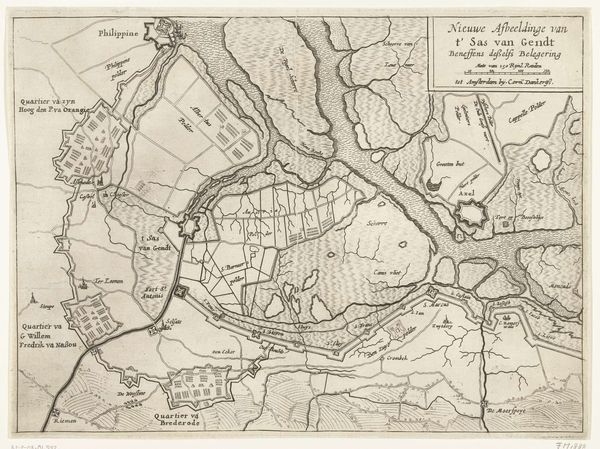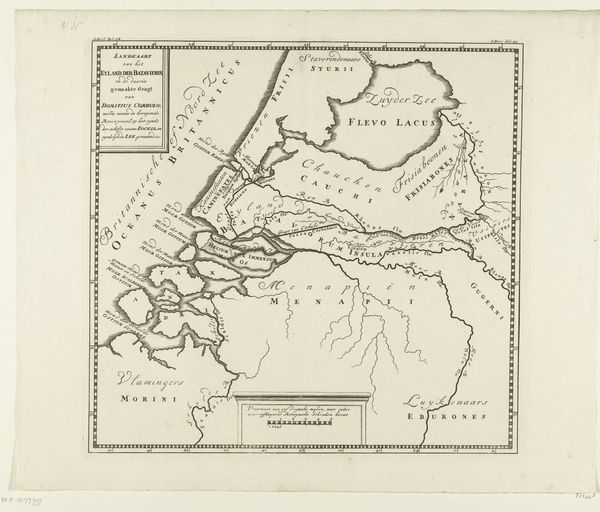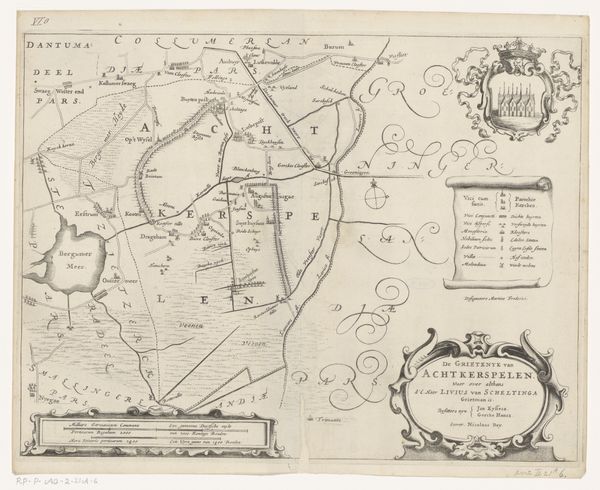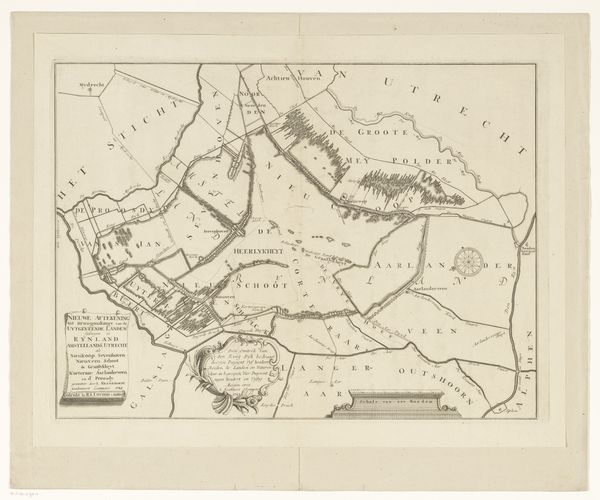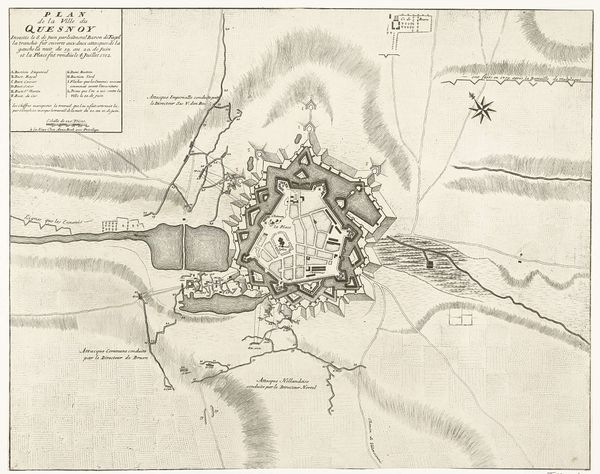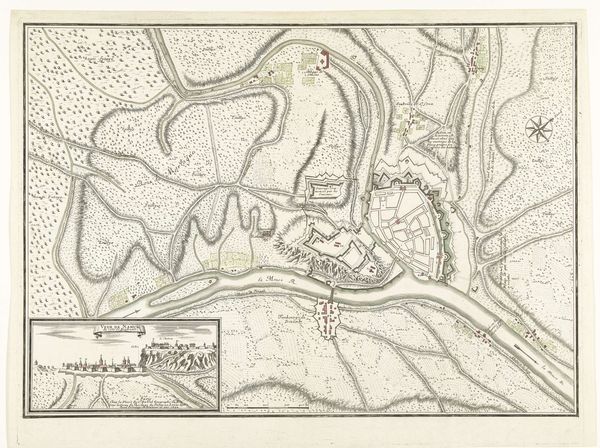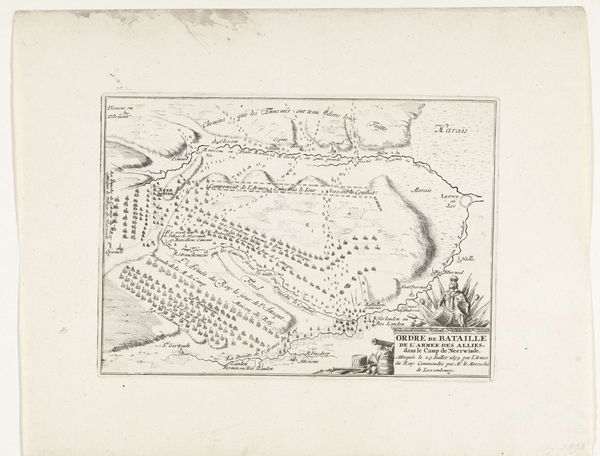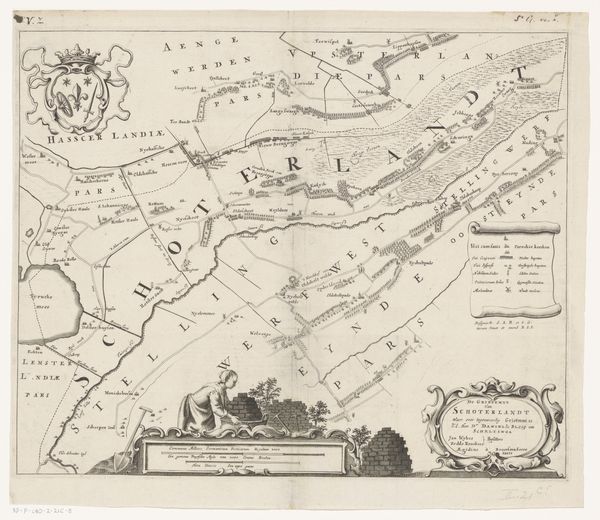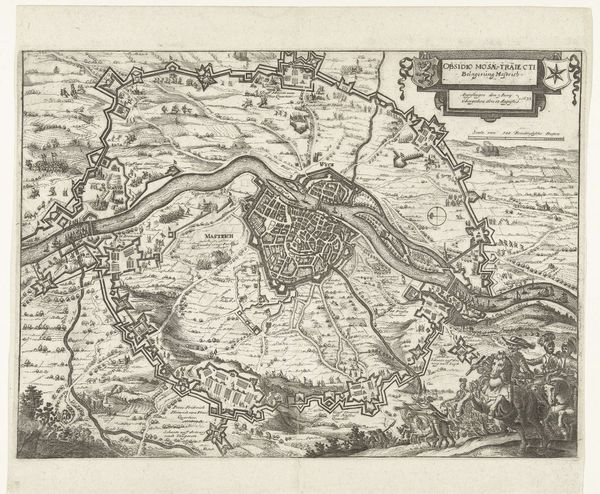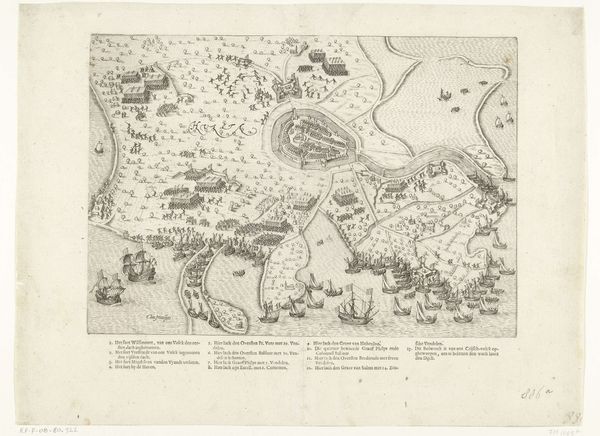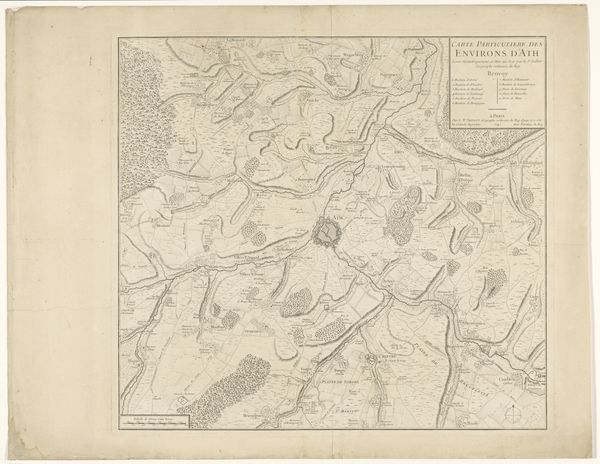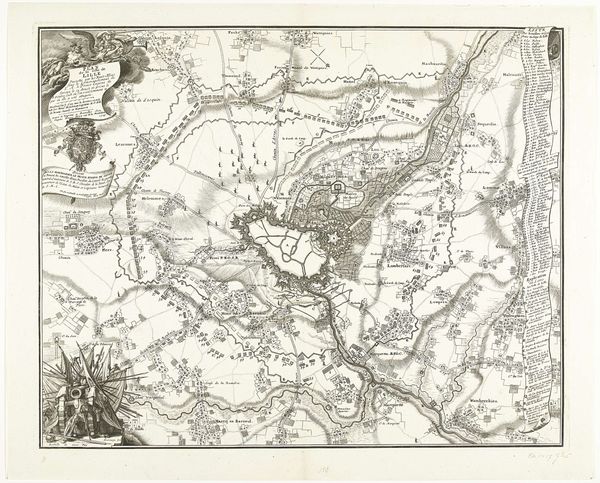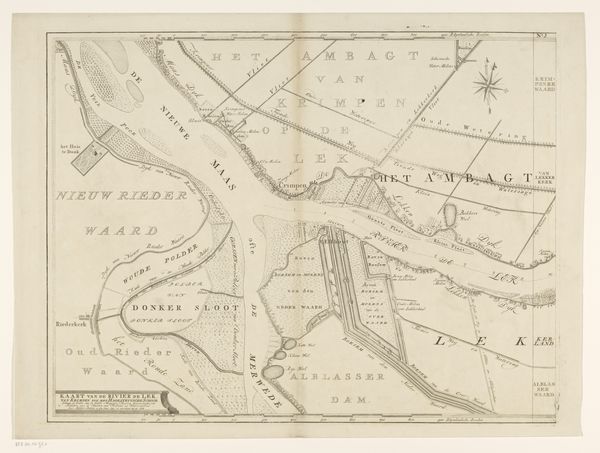
drawing, print, ink, engraving
#
drawing
#
baroque
# print
#
pen illustration
#
old engraving style
#
landscape
#
ink
#
geometric
#
line
#
history-painting
#
engraving
Dimensions: height 245 mm, width 350 mm
Copyright: Rijks Museum: Open Domain
Editor: Here we have an anonymous engraving from 1715, titled "Battle of Fleurus, 1690." It seems to depict a bird's eye view of a battlefield, rendered with meticulous detail in ink. It feels less like a work of art and more like a historical document, though the landscape is beautifully drawn. What should we make of this piece? Curator: This isn’t just a historical document, but a carefully constructed narrative reflecting power dynamics of the time. Look closely – how does the artist choose to represent the landscape and, more importantly, the forces at play? Editor: I see what you mean. The troops are arranged geometrically and almost abstractly. The topography also seems exaggerated, especially around the villages. Curator: Exactly. These strategic visualizations, commissioned and circulated widely, weren't neutral. They served as propaganda, shaping public opinion and solidifying the victor's narrative. Who do you think benefitted most from this idealized, orderly depiction of battle? Editor: Well, probably the side that won! It certainly presents an image of control and strategic brilliance. It’s interesting to consider how this contrasts with the chaotic realities of warfare, and who is erased or idealized in that rendering. Curator: Precisely! And considering this was created a quarter-century after the actual event, what does that tell us about the enduring power of memory and the deliberate construction of historical narratives? This piece also engages with themes of nationhood, as the borders in a certain sense define it. Editor: I hadn't considered it in that way before. It makes me realize that even seemingly objective depictions can be deeply political. It's more than just a battle; it's about control of information and collective memory. Curator: Indeed. Analyzing these images, their context and who commissioned them lets us understand the art beyond the image: what interests does it serve, and which populations have traditionally been left out of art historical analysis.
Comments
No comments
Be the first to comment and join the conversation on the ultimate creative platform.
